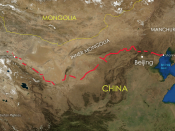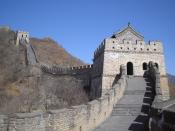Dynasties
During the 14th and 15th centuries due to a confluence of events it became possible to rule over a great many people with relative ease. A few individuals--who were ahead of their time--recognized this potential and put it to the test. What ensued were dynasties.
A dynasty occurred when individuals or a group of individuals was able to take control of a large land mass and population and develops it into a single unified well managed society. Many of the dynasties of this time shared other key characteristics that make them what they are. They all strived to build manageable states so the next generation of rulers could keep the ball rolling. Those who ruled over these dynasties also figured how to appear more worthy of the position than the next guy. They claimed to have divine rights or a mandate of heaven.
The Ottoman, Ming, and various European dynasties excelled at creating the model dynasty.
They did this three key ways, "laws, language and land." Even though they each completed these tasks in different ways they all had a similar effect.
Land (territorial expansion) was probably the most important aspect to every dynasty. The Ottomans had few enemies, this was due impart to the fact that their army was very powerful and its commanders great. This army pushed itself north encroaching into Europe. Suliman the first great sultan of the Ottomans won a decisive victory early in his career. This victory was over the island of Rhodes, after taking Rhodes the Ottomans then controlled the eastern region of the Mediterranean. Europe was divided into many small pieces making boarders every important. Even though there was no overwhelming invasion of territory in Europe, there was vicious fighting between states for every inch they could get. The Ming though...


